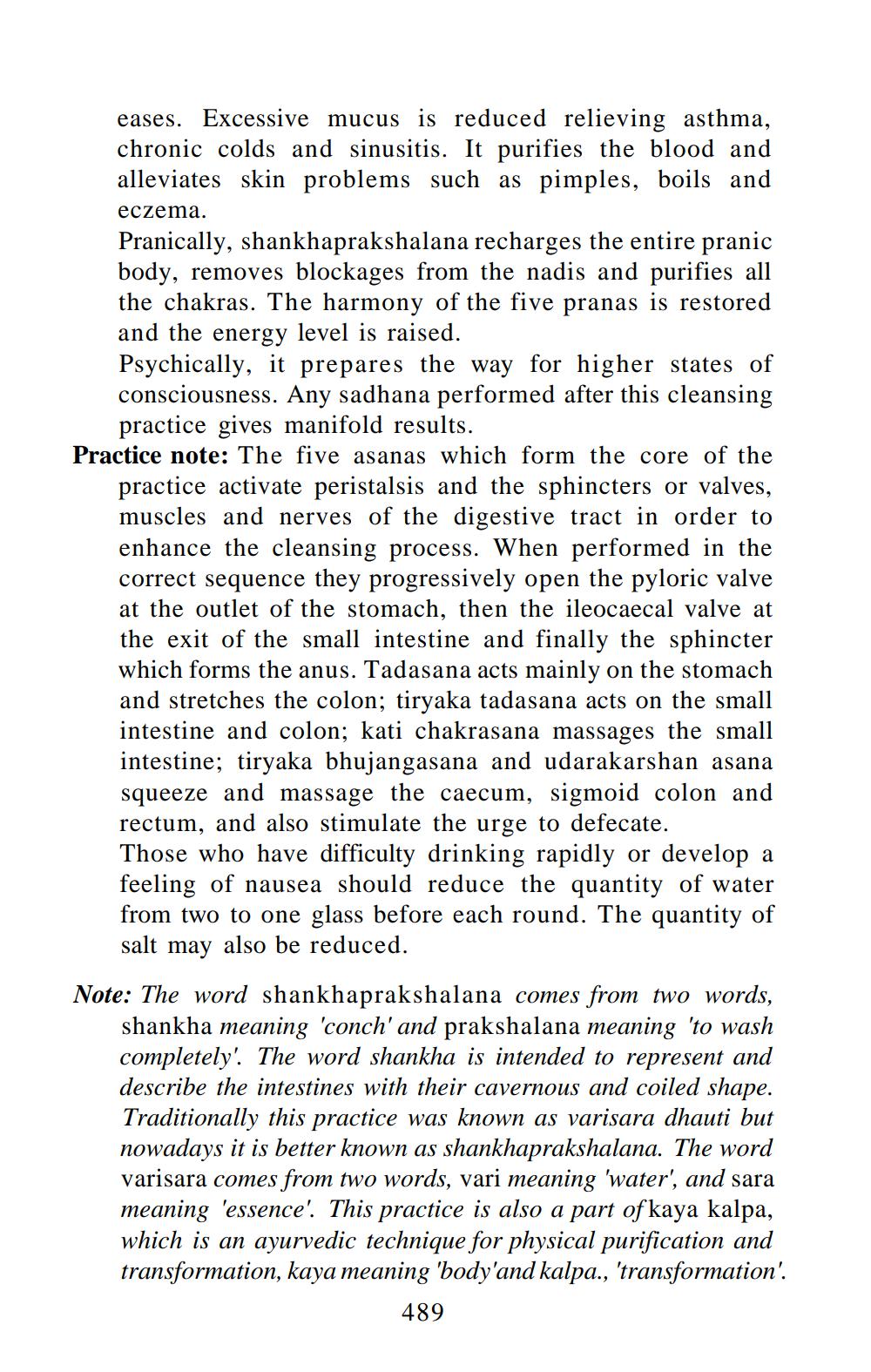________________
eases. Excessive mucus is reduced relieving asthma, chronic colds and sinusitis. It purifies the blood and alleviates skin problems such as pimples, boils and
eczema.
Pranically, shankhaprakshalana recharges the entire pranic body, removes blockages from the nadis and purifies all the chakras. The harmony of the five pranas is restored and the energy level is raised.
Psychically, it prepares the way for higher states of consciousness. Any sadhana performed after this cleansing practice gives manifold results.
Practice note: The five asanas which form the core of the practice activate peristalsis and the sphincters or valves, muscles and nerves of the digestive tract in order to enhance the cleansing process. When performed in the correct sequence they progressively open the pyloric valve at the outlet of the stomach, then the ileocaecal valve at the exit of the small intestine and finally the sphincter which forms the anus. Tadasana acts mainly on the stomach and stretches the colon; tiryaka tadasana acts on the small intestine and colon; kati chakrasana massages the small intestine; tiryaka bhujangasana and udarakarshan asana squeeze and massage the caecum, sigmoid colon and rectum, and also stimulate the urge to defecate. Those who have difficulty drinking rapidly or develop a feeling of nausea should reduce the quantity of water from two to one glass before each round. The quantity of salt may also be reduced.
Note: The word shankhaprakshalana comes from two words, shankha meaning 'conch' and prakshalana meaning 'to wash completely'. The word shankha is intended to represent and describe the intestines with their cavernous and coiled shape. Traditionally this practice was known as varisara dhauti but nowadays it is better known as shankhaprakshalana. The word varisara comes from two words, vari meaning 'water', and sara meaning 'essence'. This practice is also a part of kaya kalpa, which is an ayurvedic technique for physical purification and transformation, kaya meaning 'body'and kalpa., 'transformation'.
489




